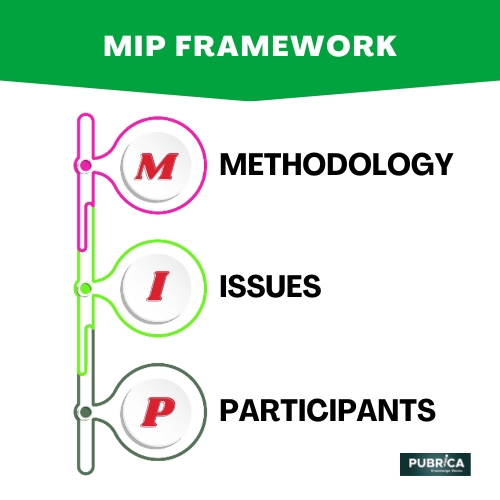MIP Research Question Framework
The Methodology, Issues and Participants’ research framework is a framework that helps researchers plan and organize their studies.
- Methodology refers to the approach and techniques used to gather and analyze data for a study. This can include quantitative methods, such as surveys or experiments, or qualitative methods, such as interviews or focus groups.
- Issues refer to the challenges or problems that may arise during the research process, such as ethical considerations, biases, or methodology limitations.
- Participants refer to the individuals or groups who will be involved in the study, such as participants in a survey or interviewees in a qualitative study.
By considering these three elements together, researchers can design a research study that is appropriate for their research question, feasible to conduct, and ethical in its treatment of participants.

This document describes a methodology for dealing with mixed integer programming issues that are based on a “constrained” black box approach. Iteratively create corridors around incumbent solutions given a MIP formulation, a black-box solver, and a collection of incumbent solutions by adding exogenous constraints to the initial MIP formulation. A conventional MIP solution is then used to explore these corridors, maybe optimally. The suggested framework was tested on a problematic form of the lot size issue known as the multi-level lot sizing problem with organizations and carryovers. When evaluated on 1920 benchmark instances, the algorithm was able to solve to near-optimality every instance of the benchmark library and, on the most challenging examples, locate high-quality solutions early in the search phase. When compared to a commercial MIP solver and the top method from the literature review, the approach outperformed both in terms of solution quality and computing time.
References
Caserta, Marco, and Stefan Voß. “A MIP-based framework and its application on a lot sizing problem with setup carryover.” Journal of Heuristics 19 (2013): 295-316.
